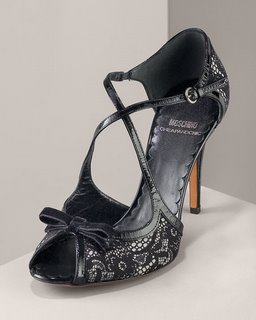 Already known in the industry as one of New York's most up and coming designers, Tory Burch brings about a subtle yet unique and suprisingly bold accent to classic American style. Her designs incorporate several different themes that fuse into one another melodically. Accents of vintage compliment a modern touch of upper east side chic with an equestrian prep look. Confused? Think Lauren Hutton back in the late 70's meets Kate Hudson.
Already known in the industry as one of New York's most up and coming designers, Tory Burch brings about a subtle yet unique and suprisingly bold accent to classic American style. Her designs incorporate several different themes that fuse into one another melodically. Accents of vintage compliment a modern touch of upper east side chic with an equestrian prep look. Confused? Think Lauren Hutton back in the late 70's meets Kate Hudson.  This should come as no suprise to anyone, considering her background within the industry involved working for Ralph Lauren, Loewe as well as Vera Wang. Her years in working for these designers certainly paid off, as Burch became inspired by a multitude of different concepts and had them form a never-before-seen combination of casual, sexy, groovy and well-groomed.
This should come as no suprise to anyone, considering her background within the industry involved working for Ralph Lauren, Loewe as well as Vera Wang. Her years in working for these designers certainly paid off, as Burch became inspired by a multitude of different concepts and had them form a never-before-seen combination of casual, sexy, groovy and well-groomed. In a Bohemian-style tunic with gold embroidery and knee-high equestrian style boots, Tory Burch plays around with more down-to-earth looks with a hint of young and hip. Among some of her looks, Burch uses gold hardware, bold-colored prints, fur trim, she plays with vests and reinvents silk blouses with outfits that do not define an overtly feminine ensemble.
 So what's the big deal? How is Tory Burch any different from any other designer in the same genre. Labels such as Blumarine, Marc jacobs and Carolina Herrera have toyed with similar concepts of down tempo, retro-vintage, and altered classics. What makes Tory Burch so unique? It is only so often that the US is able to shine through with their own definition of style without blatant European influences. American style offers a sense of familiarity into a largely unproportionate scale of US designers vs. European Designers. Tory Burch can be viewed as a signature to new age American style that switches up her image to allow for a diversified audience that are sure to enjoy her artistic capabilities. Sticking to one theme will most probably hurt the overall image of any designer. Timeless classics can become cliché. The latest trends in high gear get old quick. Tory Burch enables fashion to be turned over ever so often and allows for it to be real: what represents you and what allows for her clientele to feel full fashion without looking planned and gaudy. Tory Burch enables people to break from the mold and find great pleasures in simple things and looks that are wearable and unique to label-obsessed minds. It's fashion actually to be worn, not just be seen. Vintage never seemed so chic.
So what's the big deal? How is Tory Burch any different from any other designer in the same genre. Labels such as Blumarine, Marc jacobs and Carolina Herrera have toyed with similar concepts of down tempo, retro-vintage, and altered classics. What makes Tory Burch so unique? It is only so often that the US is able to shine through with their own definition of style without blatant European influences. American style offers a sense of familiarity into a largely unproportionate scale of US designers vs. European Designers. Tory Burch can be viewed as a signature to new age American style that switches up her image to allow for a diversified audience that are sure to enjoy her artistic capabilities. Sticking to one theme will most probably hurt the overall image of any designer. Timeless classics can become cliché. The latest trends in high gear get old quick. Tory Burch enables fashion to be turned over ever so often and allows for it to be real: what represents you and what allows for her clientele to feel full fashion without looking planned and gaudy. Tory Burch enables people to break from the mold and find great pleasures in simple things and looks that are wearable and unique to label-obsessed minds. It's fashion actually to be worn, not just be seen. Vintage never seemed so chic.












